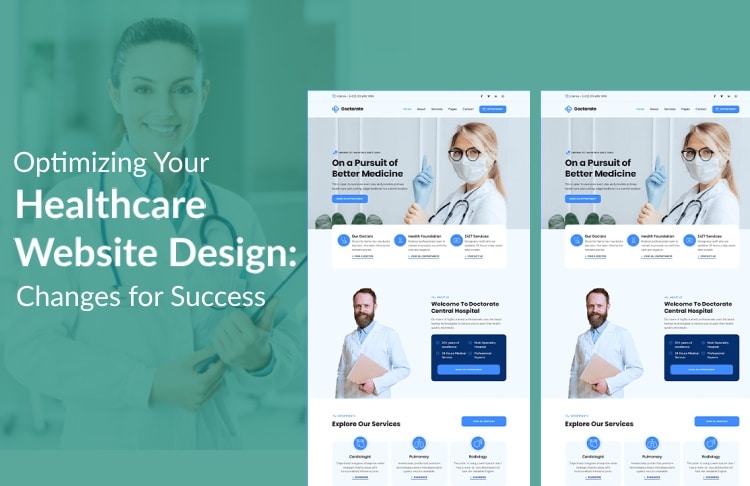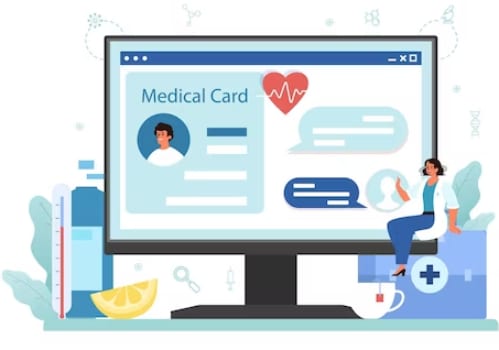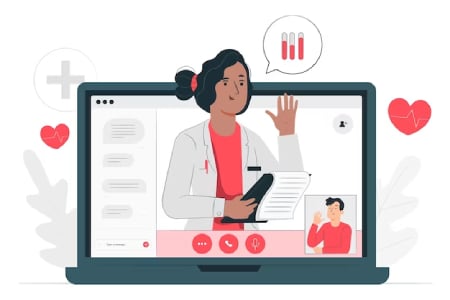In today’s digital age, a strong online presence is crucial for businesses in all industries, including healthcare. Your healthcare website serves as a virtual front door for patients, caregivers, and visitors seeking information, services, and medical resources.
Therefore, investing in an effective website design is not just an option but a necessity. In this blog post, we’ll explore some key changes that can make a significant difference in enhancing your healthcare website design.

1. User-Centric Design:
Your healthcare website should be designed with the end-users in mind—patients and caregivers. A user-centric design ensures that visitors can easily navigate your website, find the information they need, and access services without frustration.

Consider using clear and concise language, intuitive navigation menus, and prominent calls-to-action (CTAs) to guide users through the website.

2. Mobile Responsiveness:
With the majority of internet users accessing websites from mobile devices, ensuring your healthcare website is responsive is essential. A responsive design adapts seamlessly to various screen sizes, providing a consistent user experience across smartphones, tablets, and desktop computers.
3. Speed and Performance:
A slow-loading website can deter users and negatively impact your search engine rankings. Optimize your healthcare website’s speed and performance by compressing images, minifying code, and leveraging browser caching. A fast website not only keeps visitors engaged but also contributes to better SEO.


4. HIPAA Compliance:
Security and privacy are paramount in healthcare. Ensure that your website design complies with the Health Insurance Portability and Accountability Act (HIPAA) regulations. This involves implementing measures to protect patient information and using secure communication channels for sensitive data.
5. Accessible Design:
An accessible website design ensures that all users, including those with disabilities, can easily navigate and interact with your content. Use alt text for images, provide text alternatives for multimedia, and follow accessibility guidelines to make your healthcare website inclusive.


6. Clear Call-to-Actions:
Guide your website visitors to take specific actions, such as scheduling appointments, contacting your office, or downloading patient resources. Utilize clear and strategically placed CTAs that stand out from the rest of the content.
7. Engaging Content:
High-quality, informative content not only educates your audience but also positions your healthcare website as a valuable resource. Incorporate blog posts, videos, infographics, and patient testimonials to engage visitors and establish your expertise.


8. Patient Portals and Resources:
Develop a patient portal where patients can access their medical records, test results, prescription information, and communicate securely with healthcare providers.
Provide educational resources such as articles, videos, and FAQs to empower patients with reliable health information.
9. Online Appointment Scheduling:
Allow patients to schedule appointments conveniently through your website. Implement an easy-to-use online booking system that syncs with your practice’s schedule, reducing the need for phone calls and improving patient satisfaction.


10. Telehealth Integration:
The recent surge in telehealth services makes it important to integrate telehealth options into your healthcare website. Provide information about virtual consultations, set up a secure platform for online appointments, and guide patients through the process.
11. Social Proof and Testimonials:
Build trust and credibility by showcasing patient testimonials, success stories, and reviews. Positive feedback from real patients can influence potential patients and caregivers to choose your healthcare services.


12. Contact Information and Maps:
Ensure that contact information, including phone numbers, email addresses, and physical addresses, are easily accessible. Embed interactive maps to help users find your healthcare facility.
In conclusion, a well-designed healthcare website can significantly impact your practice’s success by attracting, engaging, and serving your target audience effectively. By implementing these changes, you can create a website that not only meets the needs of your patients but also sets your healthcare practice apart in the competitive online landscape. Remember, your website is a reflection of your commitment to patient care and a vital tool for building lasting relationships in the digital era.
FREE Consult with a Website Designing Expert
For more than 11 years, we’ve worked with thousands of India and International businesses to help them achieve their business goals. Are you ready to take your website and business to the next level? We’re here to inspire you to thrive. Connect with WHTL, Bangalore’s leading web design and digital marketing agency, for your FREE consultation with a web Design expert.







Leave A Comment